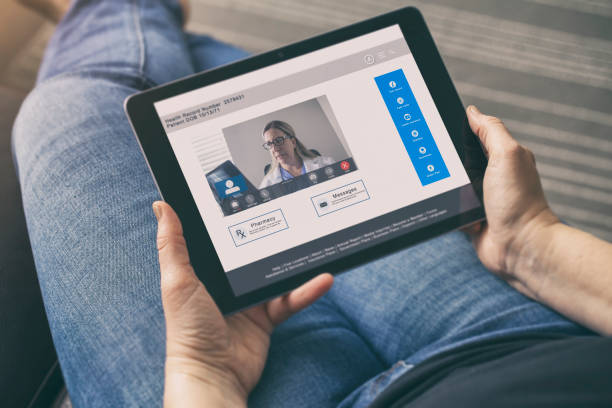With 85% of internet users in the United States watching online video content monthly on any of their devices, it’s evident that video is a crucial element for websites today source. However, simply having video content isn’t enough. If those videos don’t load quickly or play smoothly, you could be turning away viewers – and potential customers. Here are five tried-and-true tips for improving video performance on website.

The Importance of Video in the Digital Era
Before delving into the tips, let’s take a moment to understand the pivotal role videos play in our online experiences. Video content isn’t just a fleeting trend; it’s rapidly becoming the backbone of digital content.
Why the surge? Videos are inherently engaging. They can convey emotions, tell stories, and demonstrate processes far more effectively than static images or text. Brands and creators have recognized this potential, using videos for everything from product launches to tutorials, storytelling to testimonials.
But, as with any powerful tool, there’s a responsibility to wield it correctly. And in the realm of online videos, this means ensuring they’re optimized for performance. Let’s explore the strategies that can help you achieve just that.
5 Tips for Improving Video Performance on Website
1. Optimize Video File Size
High-definition videos might look amazing, but they’re often enormous files. Big files take longer to download, leading to slow playback and buffering issues.
How to Reduce Video Size:
- Compression tools: Use tools like HandBrake or Adobe Media Encoder to compress your video files without significant quality loss.
- Choose the right format: MP4 is widely recommended due to its balance of quality and file size. WebM and AVI are also popular choices.
- Limit video length: If possible, keep your videos short and concise. Not only does this benefit the file size, but it’s also better for keeping your audience’s attention.
2. Leverage a Content Delivery Network (CDN)
A Content Delivery Network, or CDN, is a network of servers spread across different locations. When a user accesses your video, the CDN will deliver it from the server closest to that user, ensuring faster load times and smoother playback.
Benefits of Using a CDN:
- Speed: Reduces latency issues since the data travels a shorter distance.
- Reliability: If one server goes down, another can pick up the slack, ensuring uninterrupted video delivery.
- Scalability: Can handle large traffic spikes.
Reputable CDNs include Akamai, Cloudflare, and Amazon CloudFront.
3. Implement Adaptive Bitrate Streaming
Adaptive Bitrate Streaming (ABS) is a technique that dynamically adjusts the quality of a video in real-time, based on the viewer’s internet speed. This ensures that users always get the best possible viewing experience for their current conditions.
Platforms like HLS (HTTP Live Streaming) and MPEG-DASH utilize ABS.
Advantages of ABS:
- Better user experience: Viewers see fewer buffering issues, even with fluctuating internet speeds.
- Cost-effective: Streaming lower bitrates to users with slower connections can save bandwidth costs.
4. Prioritize Mobile Optimization
With over half of global website traffic coming from mobile devices, it’s essential to optimize video performance for mobile users.
Mobile Video Optimization Tips:
- Responsive design: Ensure your video player is responsive, so it adapts to various screen sizes.
- Touch-friendly controls: Ensure video controls are easily accessible for touch-screen users.
- Auto-play considerations: Many mobile users dislike auto-playing videos, especially with sound. Consider using muted auto-play or forgoing it altogether.
5. Use Video Thumbnails

Instead of auto-playing videos, using a compelling video thumbnail can entice users to click play. This reduces initial load times and gives users the autonomy to choose when they start watching.
Effective Thumbnail Tips:
- High-quality imagery: Make sure the thumbnail is clear and represents the video content.
- Include text: A brief title or description can give context to potential viewers.
- CTA buttons: Consider adding a ‘Play Now’ button to make it more interactive.
Conclusion
Ensuring the smooth playback of videos on your website can significantly enhance the user experience. By optimizing file sizes, leveraging CDNs, implementing ABS, focusing on mobile optimization, and utilizing compelling video thumbnails, you can offer a seamless video viewing experience. Remember, a happy viewer is more likely to engage with your content, share it, and return for more.
Note: Always monitor video performance on your website, as web standards and technologies are continuously evolving. Stay updated with the latest trends and best practices to ensure optimal video delivery.

Frequently Asked Questions (FAQ)
Q1: Why is video optimization important for websites?
Answer: Video optimization ensures faster loading times, smooth playback, and an overall enhanced user experience. A well-optimized video can improve user engagement, reduce bounce rates, and even boost conversions on commercial sites.
Q2: What’s the difference between regular streaming and Adaptive Bitrate Streaming (ABS)?
Answer: Regular streaming delivers video at a constant quality, regardless of the viewer’s internet speed. In contrast, ABS dynamically adjusts the video quality based on the viewer’s internet conditions, ensuring the best possible viewing experience without excessive buffering.
Q3: How do CDNs improve video performance?
Answer: CDNs, or Content Delivery Networks, store copies of your video on multiple servers across the globe. When a user accesses your video, it’s delivered from the closest server, ensuring faster load times and reducing latency.
Q4: Are there any downsides to compressing video files?
Answer: While compression reduces file size, over-compression can lead to a loss in video quality. It’s crucial to find a balance where the video quality remains acceptable while benefiting from reduced file sizes.
Q5: Should I auto-play videos on my website?
Answer: Auto-playing videos can enhance engagement in some cases, but they can also be intrusive, especially if they play with sound. Consider your audience’s preferences. If you do use auto-play, it’s a good practice to mute the video by default and allow users to toggle sound on.
Q6: How can I measure the performance of my videos?
Answer: Tools like Google Analytics and specialized video hosting platforms provide insights into video views, average watch times, drop-off rates, and other essential metrics. Monitoring these can give a clear picture of your video’s performance and areas for improvement.









